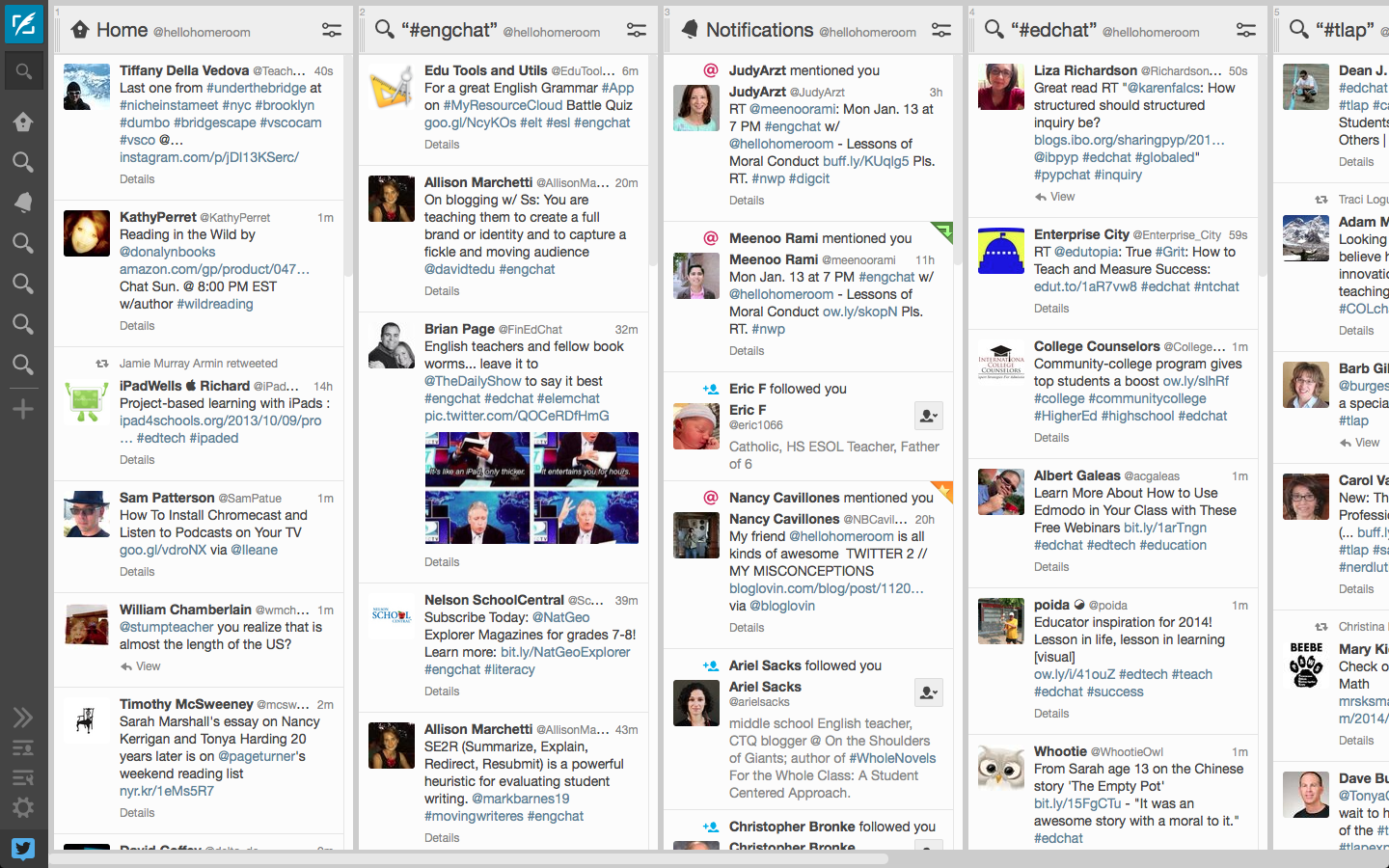S E T T I N G U P
- Visit twitter.com and create an account. Your username (also called your handle) can be whatever you want, and I would recommend keeping it simple. Most folks go with some form of their name/initials or their primary professional affiliation. Remember that character count is an issue, so a shorter handle will be beneficial.
- Set up a profile. It doesn't have to be earth-shakingly awesome, but definitely include a real photo and write something about yourself. You can change this later, but definitely start with something. I think everyone gets freaked out by the anonymous grey silhouette icon and zero information about the user.
- Download a Twitter client that will keep you sane. I use Tweetdeck, and I've heard good things about Tweetchat, too. The basic Twitter interface can be overwhelming, and these tools will help you filter the items coming through your feed.
- Optional: download the app for your mobile devices!
W H A T T O F O L L O W
There are two basic things you can follow on Twitter: users and hashtags.
A user will be defined by the @ symbol. For example, my Twitter handle is @hellohomeroom. For example, when anyone types @hellohomeroom into a tweet, I receive a notification that someone is reaching out to me.
A hashtag is defined by the # symbol. A tweet will include a hashtag in order to be categorized with other tweets that use the same hashtag. For example, including the hashtag #downtonabbey into a tweet will classify that tweet with every other tweet with the same hashtag. As a result, Sunday nights are busy with everyone who is watching and tweeting about #downtonabbey, and any user who wants to see what people are saying about only Downton Abbey can search that hashtag and see only those tweets.
Here is a screenshot of my Tweetdeck currently:

At the far left is my timeline, which comprises the tweets of everyone I follow. Next, I have a column for #engchat, which is a running conversation for English teachers (with a focused chat on Monday evenings). The third tab is for notifications, which includes direct messages, replies and mentions (when someone tweets @hellohomeroom), and follows. I keep #edchat open, since it's probably the most common educational hashtag.
Which hashtags are for you? Check out the lists to see if your content area, grade level, location, or interests have specifics for you to follow!
My last post of this series will focus on Twitter chats. I hope you'll join me for the upcoming #engchat I'm hosting about this coming Monday, January 13 @ 7pm. We're going to be discussing the role of morality in the classroom, and it's bound to be exciting.
hand lettering by Kelly Cummings






Hello!!!!!!!
ReplyDelete